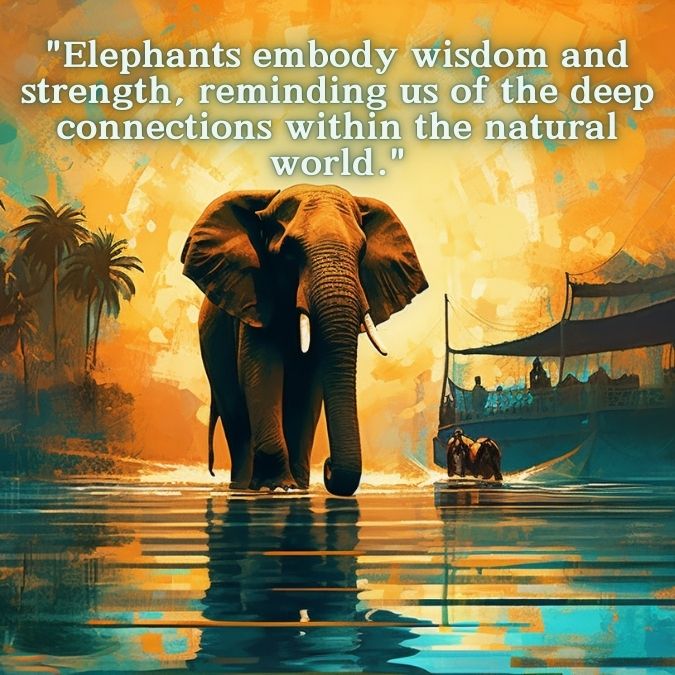
“Elephants: Gentle Giants of the Wild”
Exploring the Majesty of Elephants
Elephants are among the most magnificent creatures on our planet, celebrated for their immense size, intelligence, and complex social structures. As the largest land animals, these gentle giants captivate the hearts and minds of people around the world. In this exploration of their majesty, we delve into their behavior, habitats, conservation challenges, and the vital role they play in our ecosystems.
Physical Characteristics and Behavior
There are three main species of elephants: the African bush elephant, the African forest elephant, and the Asian elephant. African elephants are the largest, with males weighing up to 12,000 pounds and standing about 13 feet tall at the shoulder. Their large ears, which help regulate body temperature, and long trunks, used for a variety of tasks from feeding to social interaction, are iconic features that set them apart.
Elephants are known for their remarkable intelligence. They exhibit behaviors such as problem-solving, self-awareness, and even mourning their dead. Their social structures are matriarchal, led by the oldest female. Elephant herds typically consist of females and their young, while adult males may roam alone or form small bachelor groups. This strong social bond is evident in their interactions, as they communicate through vocalizations, body language, and even low-frequency sounds that can travel long distances.
Habitats and Distribution
Elephants inhabit a variety of ecosystems, from savannas and grasslands to forests and wetlands. African elephants are primarily found in sub-Saharan Africa, while Asian elephants inhabit regions across South and Southeast Asia. These habitats provide them with the resources they need, including food, water, and shelter. As herbivores, elephants play a crucial role in shaping their environments by uprooting trees, creating pathways, and dispersing seeds through their dung. This behavior promotes biodiversity and helps maintain healthy ecosystems.
Conservation Challenges
Despite their majestic presence, elephants face significant threats that jeopardize their survival. Habitat loss due to agricultural expansion, logging, and urban development has led to fragmented populations. Additionally, poaching remains a critical issue, driven by the demand for ivory, meat, and skin. The illegal wildlife trade has decimated elephant populations, particularly in Africa, where the African elephant is listed as endangered.
Conservation efforts are essential to protect these magnificent animals. Organizations worldwide work to safeguard their habitats, implement anti-poaching measures, and promote sustainable practices that benefit both elephants and local communities. Ecotourism also plays a significant role, providing economic incentives for conservation and allowing people to experience the beauty of elephants in their natural habitats.
Cultural Significance
Elephants hold a prominent place in various cultures and traditions. In many Asian countries, they are revered as symbols of wisdom, strength, and prosperity. They often appear in religious ceremonies, festivals, and art, reflecting their deep connection to human societies. In Africa, they are celebrated in folklore and storytelling, embodying the spirit of the wild.
A Call to Action
Exploring the majesty of elephants is not just about admiring their grandeur; it’s a call to action. As stewards of the planet, we have a responsibility to protect these incredible animals and their habitats. Supporting conservation initiatives, raising awareness, and advocating for policies that safeguard wildlife can make a significant difference.
Ecologically, elephants play a critical role in their environments. As herbivores, they consume vast amounts of vegetation, helping to maintain the balance of their ecosystems. Their feeding habits create pathways for other wildlife and facilitate seed dispersal, promoting biodiversity. By uprooting trees and clearing underbrush, they help sustain the savanna landscape, supporting numerous plant and animal species. Despite their majesty, elephants face significant threats from habitat loss and poaching, driven by the illegal ivory trade. Conservation efforts are crucial to protecting these magnificent animals and their habitats. By fostering awareness and supporting sustainable practices, we can help ensure that future generations will continue to marvel at the beauty and grandeur of elephants, the true guardians of the wild.
conclusion
Elephants are truly majestic beings that enrich our world. Their intelligence, social structures, and ecological importance remind us of the intricate connections within nature. By recognizing their value and the challenges they face, we can work towards a future where elephants roam freely, embodying the majesty of the wild for generations to come.















